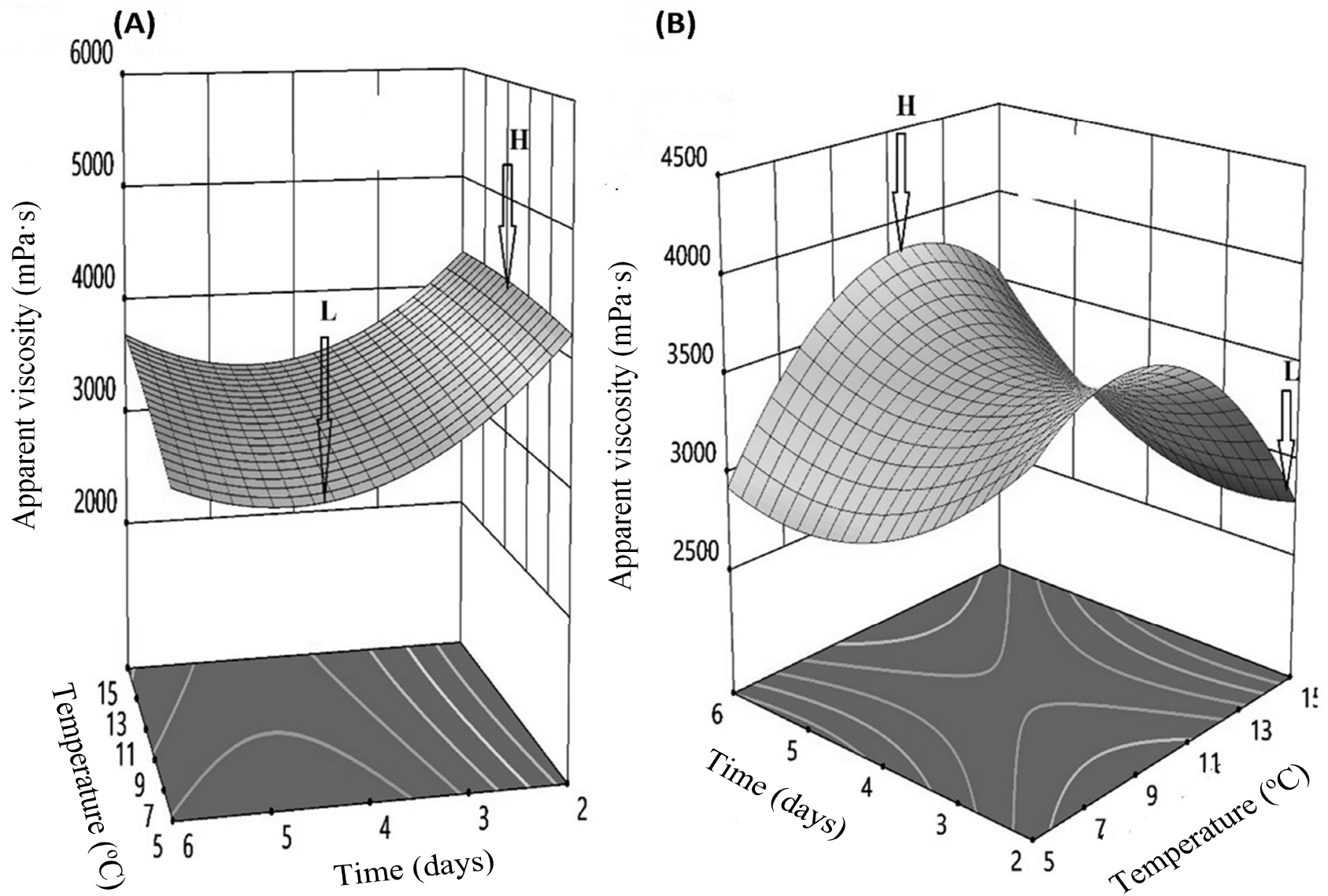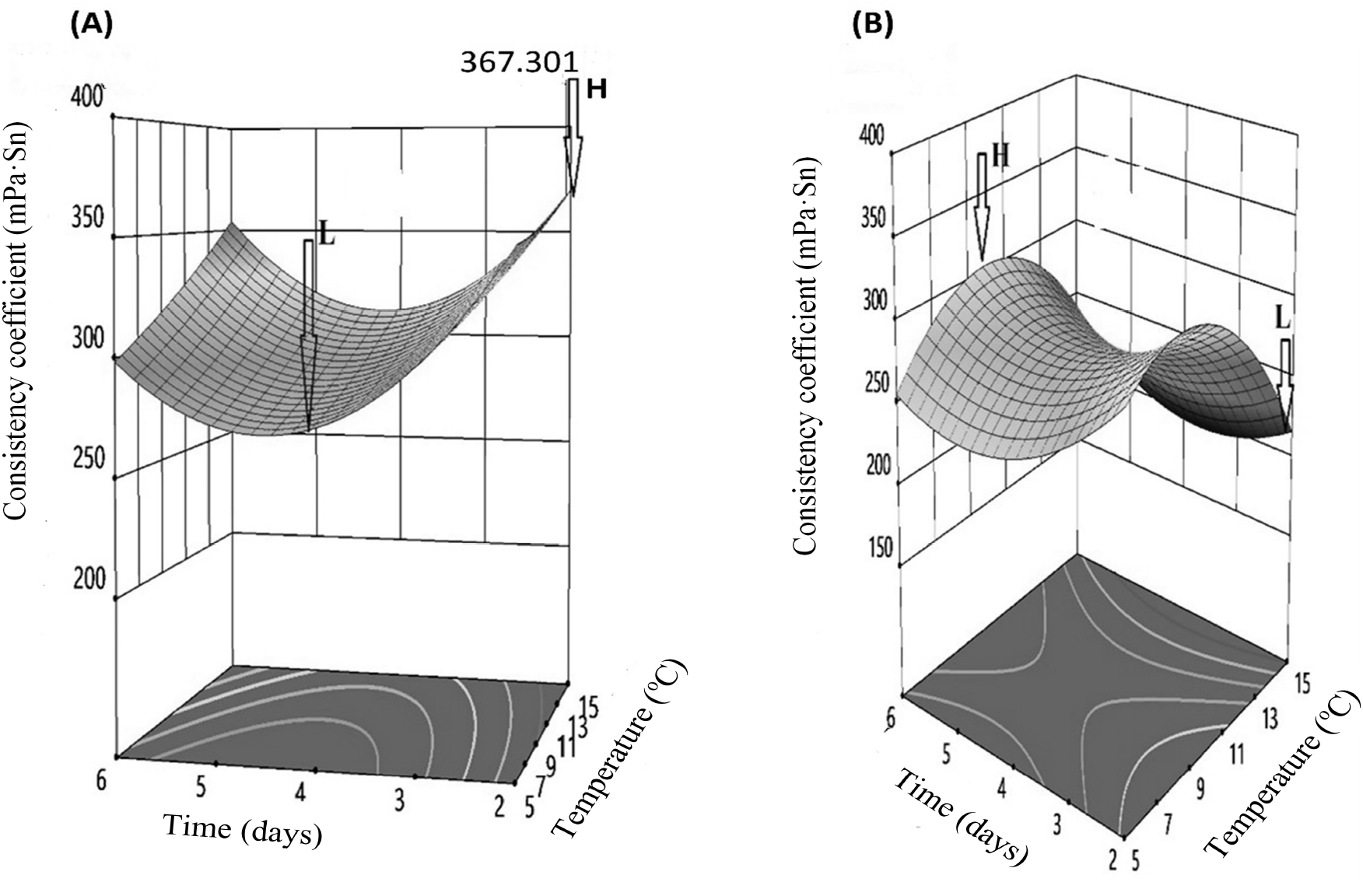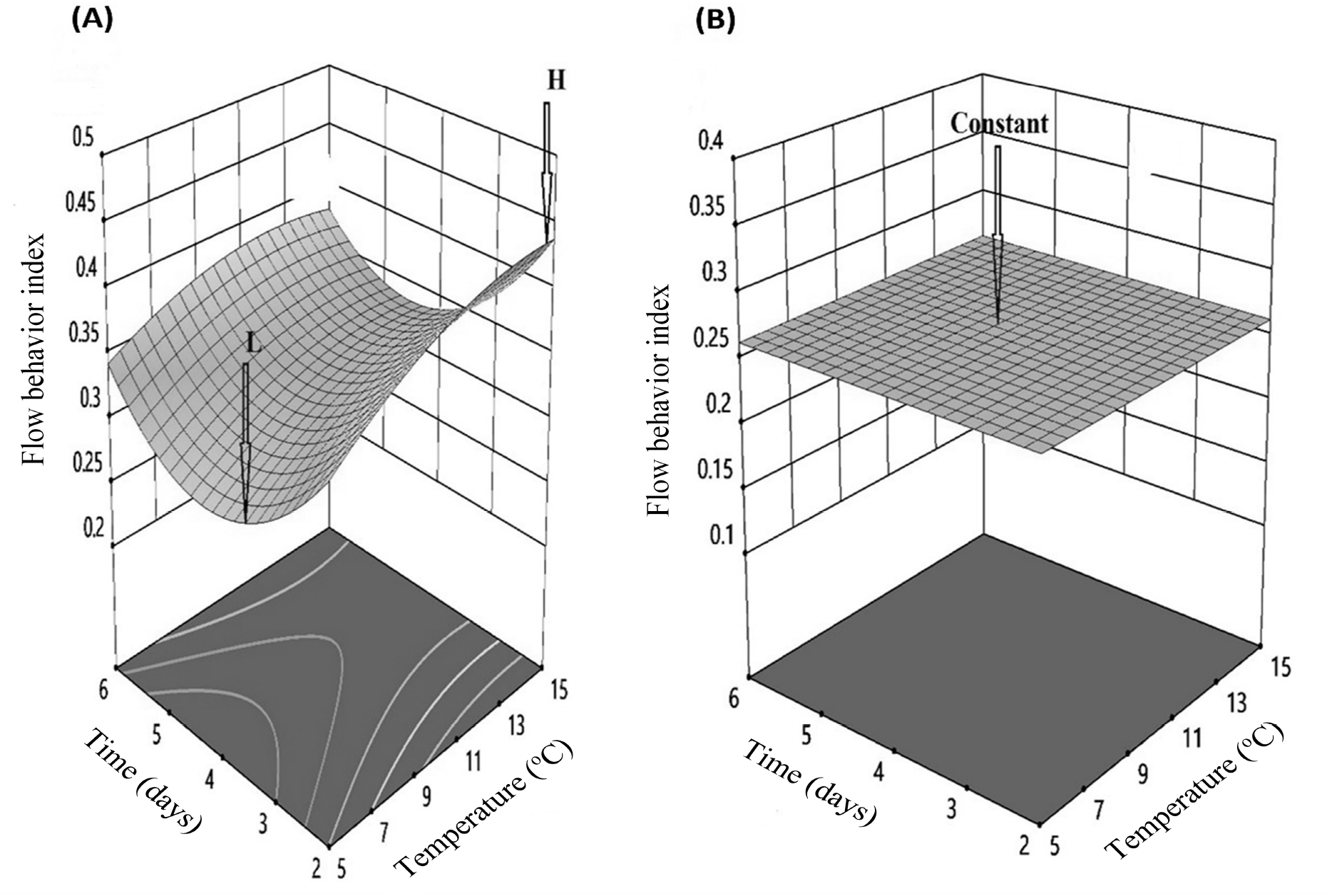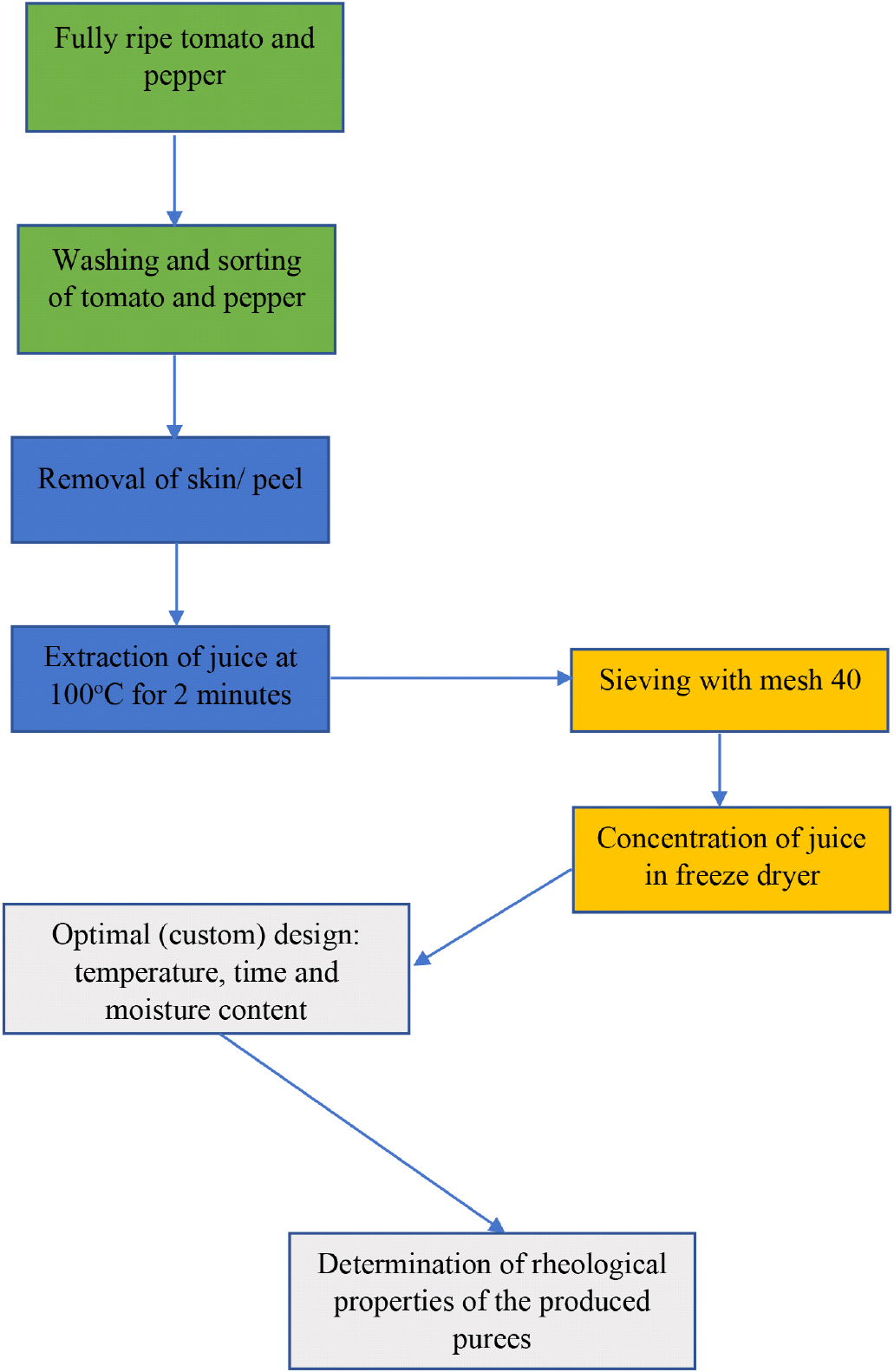1. Introduction
In recent years, the fresh-cut vegetable market has experienced rapid growth due to increased awareness of the importance of consuming fresh and healthy food (Balali et al., 2020; Zhang et al., 2019). Traditional foods like fruits and vegetables are now recognized as essential bioactive foods with numerous health benefits (Angelino et al., 2019). Tomatoes and peppers stand out as one of the most popular vegetables consumed either fresh or in various derived products such as canned sauces, purees, and pastes (Alajrami and Abu-naser, 2019; Ali et al., 2021). Several studies have emphasized that the derived products of tomatoes and pepper contain excellent antioxidant, anti-inflammatory, and anticancer qualities (Ali et al., 2021; Nasar et al., 2023). These health-promoting benefits of the products are often attributed to the presence of carotenoids, phenolics, organic acids, amino acids, flavonoids, and ascorbic acid (Gao et al., 2021; Jo et al., 2022). Furthermore, tomatoes are a good source of fiber, which may enhance the efficiency of the digestive system and help prevent chronic diseases (Salehi et al., 2019). Regular consumption of products is believed to contribute to the prevention of prostate cancer, gastrointestinal issues, and cardiovascular diseases.
The study on the effects of process parameters on the rheological properties of tomato and pepper purees is paramount in the food processing industry. Rheological properties, including viscosity, consistency, and flow behavior, are critical indicators of the physical characteristics of purees (Andriani, 2020; Stanciu, 2022). Understanding how various process parameters influence these rheological properties is essential for optimizing the production process and ensuring the consistency and quality of the final product (Sonawane, 2021; Zhu et al., 2019). Tomatoes and pepper are widely utilized in various food products, and their purees serve as fundamental ingredients in sauces, soups, and other culinary applications (Ingrao et al., 2019; Tan and Kerr, 2015). Therefore, investigating how factors such as temperature, moisture content, and processing time affect the rheological behavior of these purees is instrumental in enhancing product quality, meeting consumer preferences, and achieving operational efficiency in the food processing sector.
The influence of rheological properties extends to the handling and transportation of purees within the supply chain (Andriani, 2020; Balestra et al., 2011; Zhu et al., 2019). A thorough understanding of this property enables the design of suitable product packaging and transportation methods (Andriani, 2020). This will help mitigate the risk of product degradation and ensure product integrity throughout production to consumption. Furthermore, specific processing methods, such as extreme temperature, moisture, and time, may impact the nutrient content of purees (Balestra et al., 2011). Utilizing rheological studies aids in identifying the correct processing conditions to minimize nutrient loss, promote standards, and foster the production of healthier food products (Andriani, 2020). Additionally, rheological studies become indispensable when scaling up production processes (Kaur et al., 2021; Ravichandran et al., 2023). Typically, what proves effective at a laboratory scale may not directly apply to larger-scale production. It is, therefore, necessary to investigate the effects of process parameters on the rheological properties of tomato and pepper purees to ensure product quality and uphold standards during processing. This research aimed to determine the impacts of process parameters on rheological properties, including the flow behavior index, consistency coefficient, and apparent viscosity, of tomato and pepper purees. The findings from this research will potentially inform the development of innovative processing techniques that enhance the overall sustainability and economic viability of producing tomato and pepper purees at an industrial scale.
2. Materials and methods
Two kilograms freshly harvested ripe tomatoes and pepper fruits, free from microbial infection or mechanical fissures, were procured from a local Ilorin, Kwara State market. The collection of the tomato and pepper used in this study complied with the Nigerian guidelines for horticultural crop use. The fruits were then transported to the Integrated Research Laboratory in Tanke, Ilorin, for further processing. The fruits underwent sorting to ensure uniform sizes, cleaning to eliminate bruised or punctured items, and washing in clean water to remove dirt, mold, and other undesired particles before being spread in a ventilated room for subsequent experiments. All solvents and reagents utilized in this study were of analytical grade and sourced from LobaChemie PVT Ltd (Mumbai, India) including n-hexane, acetone, ethanol, petroleum ether, sodium meta-bisulfate, sodium hydroxide, calcium carbonate, hydrochloric acid, and phenolphthalein.
The preparation of the purees followed the method outlined by Al-Kafrawy et al. (2023) with minor adjustments. Tomato and pepper juices were extracted using the hot-break method, involving brief heating in boiling water (2-5 min) to soften the fruits, followed by grinding into liquid form using a mechanical grinder. The resulting mixture was filtered through a 40 mm pores mesh type filter, and subjected to freeze-drying (model: KI 251, Capacity: 6 kg) under a vacuum pressure of 0.02 mmHg. Various moisture content of the samples was obtained by reconstituting the concentrate with distilled water. The prepared purees were rapidly cooled at 10°C to inhibit microbial growth and then aseptically packaged in an airtight container at 4°C, ensuring the preservation of purity and flavor until subsequent experiments. The processing steps for puree production are illustrated in Fig. 1.
The rheological properties of the samples of the tomato and pepper puree were investigated over 2, 4, and 6 days, at temperatures of 5, 10, and 15°C, and moisture content levels of 85% (w/v), 90% (w/v), and 95% (w/v) using the Brookfield Viscometer (Model NDJ-5S) (Gujral et al., 2002). A 500 mL sample of the puree was placed in a thermostatically controlled water bath (Cintex Industrial Corporation, Dadar, India) for 15 minutes to attain thermal equilibrium. Subsequently, the apparent viscosity (μa) was measured at spindle speeds (N) of 20 rpm, 40 rpm, 60 rpm, and 100 rpm at the specified operating temperatures. The consistency coefficient (K) and flow behavior index (n) were calculated by plotting (μa) against ln(4πN) as illustrated in Eq. (1).
Where;
μa = apparent viscosity (Pa · s),
N = Spindle speed (rps),
K = consistency coefficient (Pa · Sn)
n = flow behavior index (dimensionless)
The resulting straight line from the plot of ln μa vs ln(4πN) was further analyzed to obtain Eq. (2) and Eq. (3) and solved simultaneously to obtain the required n and K (Fadeyibi, 2021).
The experiment was replicated three times, and the average values of the apparent viscosity, consistency coefficient, and flow behavior were recorded.
The optimal combination of process parameters was identified by considering the apparent viscosity, consistency coefficient, and flow behavior index as dependent variables. The independent variables in this determination were temperature, time, and moisture content, as Eq. (4) outlined.
where,
Y = Rheological parameters (apparent viscosity (m · Pa · s), consistency coefficient (m · Pa · s2), and flow behavior index).
x1 = temperature (°C)
x2 = time (days)
x3 = moisture content (%)
A Response Surface Methodology (RSM) integrating Optimal (Custom) Design through Design Expert Software (version 11) was used. The objective function was to identify the optimal conditions for producing tomato and pepper puree by maximizing the apparent viscosity, consistency coefficient, and flow behavior index and minimizing the temperature, time, and moisture content. The study considered the constraints outlined in Table 1 and maintained a significance level of p<0.05.
| Optimization variable | Unit | Allowable range | Constraint | ||
|---|---|---|---|---|---|
| −1 | 0 | +1 | |||
| Temperature | °C | 5 | 10 | 15 | −1<α≤1 |
| Time | days | 2 | 4 | 6 | −1<α≤1 |
| Moisture content | % | 85 | 90 | 95 | −1<α≤1 |
3. Results and discussion
The impact of storage conditions on the apparent viscosity of purees is elucidated in Table 2, revealing noteworthy trends for both tomato and pepper purees. In the case of tomato puree, the highest apparent viscosity was achieved under combined storage conditions of 10°C, 6 days, and 90% moisture content, while the lowest was recorded at 15°C, 2 days, and 90%. This suggests that the apparent viscosity of tomato puree tends to increase with prolonged storage time at high moisture content. Yet, it decreases with elevated temperatures over a shorter storage period. These findings align with a study by Pandey and Kumar (2016), where the viscosity of stored tomato purees with and without seeds was examined in relation to time and temperature. Similar trends were observed in the investigation by Hlaváč et al. (2021), which explored the effects of storage parameters on tomato puree across different temperature and time ranges.
Similarly, for pepper puree, the maximum apparent viscosity occurred under the combined storage condition of 15°C, 2 days, and 90%, while the minimum was noted at 15°C, 2 days, and 85%. The maximum apparent viscosity was associated with higher moisture content and temperatures but shorter storage time, indicating an increase with temperature and a decrease with storage time (Table 2). These outcomes align with the findings of Sobowale et al. (2012), reinforcing the observed relationship between storage conditions and apparent viscosity in pepper puree. The findings underscore the intricate interplay between storage conditions and apparent viscosity in tomato and pepper purees, providing valuable insights for optimizing storage practices in the food processing industry.
The effects of storage conditions on the consistency of purees are shown in Table 3. This unravels essential insights into the influence of temperature, storage time, and moisture content on the quality of tomato and pepper purees. A statistically significant difference (p<0.05) in the consistency of purees under diverse storage conditions underscores the sensitivity of these products to varying parameters. The consistency coefficient (mPa · Sn), akin to apparent viscosity, is a pivotal indicator of fluid thickness. As a fluid becomes more viscous, its consistency increases, providing an average measure of the non-Newtonian fluid’s viscosity (Tan and Kerr, 2015). In the case of tomato puree, the highest and lowest consistency coefficient values were achieved under storage conditions of 10°C, 6 days, 90%, and 15°C, 2 days, 90%, respectively. Notably, the consistency coefficient exhibited an upward trend with prolonged storage time but decreased at higher temperatures, signifying the critical role of storage temperature and time in determining puree quality. Intriguingly, moisture content did not significantly influence on the stored tomato puree.
Moreover, the highest consistency coefficient for the pepper puree was observed under storage conditions of 5°C, 4 days, and 90%, while the lowest was recorded at 15°C, 2 days, and 85%. This implies a decrease in the consistency coefficient with rising temperature and an increase with prolonged storage time. The findings align with the research efforts of Sobowale et al. (2012), whose work investigated the effects of temperature on the physicochemical and rheological properties of tomato puree. The congruence between his research findings and the present investigation adds robust support to the understanding that storage conditions, particularly temperature and time, play pivotal roles in shaping the consistency of pepper puree. This research emphasizes the intricate relationship between storage conditions and the consistency of tomato and pepper purees. The significant impact of temperature and storage time, coupled with the negligible influence of moisture content on stored purees, underscores the need for precise control and optimization of storage parameters in the food processing industry. These findings contribute valuable insights that can inform industry practices to maintain and enhance the quality of puree products.
The effects of storage conditions on the flow behavior index of tomato and pepper purees are shown in Table 4. The flow behavior index of tomato puree differs significantly based on the storage conditions. The condition of 15°C, 6 days, and 95% yielded the highest flow behavior index of 0.48, while the lowest of 0.18 was obtained at a condition of 5°C, 4 days, and 90%. Notably, the maximum result was achieved at the highest temperature, indicating that the flow behavior index increases with rising temperature and storage time. For pepper puree, the maximum flow behavior index was obtained under the storage conditions of 15°C, 9 days, and 95%, while the lowest index was observed at 15°C, 2 days, and 85%. The results establish that storage time is the primary factor determining the flow behavior index of pepper puree, with an increase noted with prolonged storage time.
In a similar investigation, Sobowale et al. (2012) reported an increased flow behavior index of purees with increasing temperature. The flow behavior index measures the deviation of the fluid from Newtonian flow, indicating the degree of non-Newtonian characteristics of a fluid (Pang et al., 2020). The shear thinning of a fluid also increases with an elevated flow behavior index. Moreover, when the flow behavior index is 1, it is considered Newtonian, but if it exceeds 1, the fluid is classified as Dilatant (Gao et al., 2021). Additionally, if the flow behavior index falls within the range of 0-1, the fluid is considered Pseudoplastic, exhibiting shear-thinning characteristics. Understanding the flow behavior index is essential in predicting how these purees respond to shear forces during processing and handling. The findings emphasize the sensitivity of the flow behavior index to storage conditions, providing valuable insights for optimizing processing parameters and ensuring the desired fluid characteristics in tomato and pepper purees.
A comprehensive comparison of the apparent viscosity, consistency coefficient, and flow behavior index of tomato and pepper purees, detailing the optimum storage parameters for achieving desirable rheological properties, is shown in Fig. 2-4. In the case of pepper puree, slight variations in optimal storage conditions were observed, as shown by the high (H) and low (L) values in Fig. 2-4. The ideal parameters for apparent viscosity and consistency coefficient were 11.77°C, 6 days, and 85% (Fig. 2A and 3A). Simultaneously, the optimal storage conditions for the flow behavior index were found to be 8.43°C, 2 days, and 85%, as outlined in Fig. 4A. In a related investigation, Ravichandran et al. (2023) studied the impact of processing techniques on bioactive and functional components of purees of fruits and vegetables, suggesting that this technique is promising for improving the consistency and flowability while ensuring microbial safety, with minimal impact on various functional components, ultimately contributing to the production of safe, nutritious, and minimally processed pepper purees with optimal rheological attributes. The findings of Kaur et al. (2021) in their work on sweet pepper puree preservation also reported lower temperatures for optimum storage of the puree. Dutta et al. (2006) examined the rheological properties of the puree in their work on rheological characteristics and thermal degradation kinetics of beta-carotene in pumpkin puree. The authors revealed a transition to pseudoplastic fluid as temperature increased, with an activation energy of 13.3845 kJ/mol for apparent viscosity and 31.9394 kJ/mol for consistency index. Also, the effect of heat processing on the rheological properties of pepper pectins was studied by Ramos-Aguilar et al. (2015). The authors reported that the pepper pectin the heat processing parameters alters the degree of consistency and viscosity of the product. Therefore, the identified conditions for the pepper puree serve as suitable storage parameters, resulting in the desired rheological properties of puree, confirming its appropriateness for consumption.



In the context of tomato puree, optimal quality responses were attained under varying storage conditions for each rheological parameter, as also indicated by the high (H) and low (L) values in Fig. 2-4. Specifically, the optimal conditions for apparent viscosity were identified as 13.21°C, 2 days, and 94.23%, while for the consistency coefficient, they were 14.42°C, 2.05 days, and 93.14%, as demonstrated in Fig. 2B and 3B. However, the flow behavior index of the tomato puree was constant at 14.96°C, 2.05 days, and 92.22%, as indicated by the arrow in Fig. 4B. These conditions signify the most suitable storage parameters ensuring the desired rheological properties of the puree, rendering it suitable for consumption. In a related study, Sahin et al. (2004) investigated the impact of hydrocolloids at varying concentrations on the rheological properties of three formulated tomato ketchup, revealing that all hydrocolloids increased the consistency of the puree. In a related investigation, Dutta et al. (2006) examined the rheological properties of peach, apple, and pear puree in their work on rheological characteristics and thermal degradation kinetics of beta-carotene in pumpkin puree. The authors reported that the purees exhibit non-Newtonian fluid behavior with exponential viscosity variation against shear rate and a decrease in yield stress and transition to pseudoplastic fluid as temperature increased, with an activation energy of 13.3845 kJ/mol for apparent viscosity and 31.9394 kJ/mol for consistency index. These comparative results underscore the critical role of precise storage conditions in determining the rheological characteristics of tomato and pepper purees. Producers can consistently achieve the desired quality and properties in the purees by identifying and adhering to these optimal storage parameters, contributing to enhanced product quality and heightened consumer satisfaction.
4. Conclusions
The study investigated the impact of temperature, time, and moisture content on the rheological properties of stored tomato and pepper purees. The results showed significant variations (p<0.05) in the apparent viscosity, flow behavior index, and consistency coefficient of both purees across different moisture content (85-95%) and temperatures (5-15°C) over 6 days, highlighting the sensitivity of these properties to environmental conditions. Notably, moisture content had no significant influence (p<0.05) on the rheological properties. Both tomato and pepper purees exhibited pseudoplastic behavior, indicated by flow behavior indices between 0 and 1, thus signifying shear-thinning characteristics. Optimal processing and storage conditions for achieving the desired rheological properties were identified as 13.21-14.42°C temperature and 92.22-94.23% moisture in 2 days for pepper, and 8.42-11.77°C temperature and 85% moisture content for tomato over 2-6 days. These findings provide valuable insights for producers seeking to maintain the quality of tomato and pepper purees throughout storage and processing.

